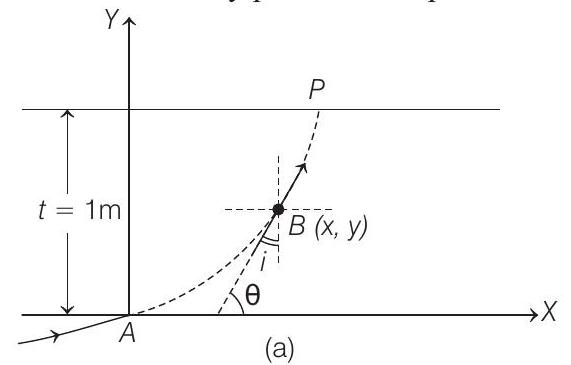Optics 7 Question 42
43. A ray of light travelling in air is incident at grazing angle (Incident angle
The refractive index of air is 1.0.
(1995, 10 M)
(a) Obtain a relation between the slope of the trajectory of the ray at a point
(b) Obtain an equation for the trajectory
(c) Determine the coordinates
(d) Indicate the path of the ray subsequently.
Show Answer
Answer:
Correct Answer: 43. (a) Slope
(b)
(c)
(d) the ray will emerge grazingly
Solution:
- (a) Refractive index is a function of

Secondly, refractive index increases as 
(b)
Now, refer to figure (a)
Let
or slope
(b) but
Applying Snell’s law at
(Grazing incidence)
because
Equating Eqs. (i) and (ii), we get
The required equation of trajectory is
(c) At point
Therefore, coordinates of point
(d) As
Therefore,






